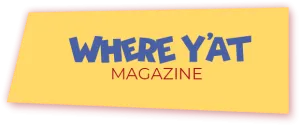To describe
the process of applying what one has learned in a particular situation to
another context, psychologists suggested the term "transfer of
learning". This means that a student's comprehension allows them to
recognize relevant knowledge and use it effectively outside original learning
conditions. Educators believe that transfer is a hallmark of true learning.
It can
function in various ways, even negative ones. It happens when students
misunderstood some information while learning. There are also so-called near
transfers, where individuals apply their knowledge to a related context, as
well as far transfers, which means using knowledge beyond the classroom, like
during trips, social interactions, or work.
To
understand this concept better, let's consider some real examples. Young people
learning electrical engineering get information about circuits and electricity,
which they apply later when the instructor brings market products into class
for dissecting and rebuilding. Another example could be a student that takes a
course on drama and writes her own play over the semester, using the techniques
and structures learned throughout her coursework.
In general,
learning transfer could take place at school when using knowledge about one
problem in order to solve another one, or when applying gained skills to
different classes as well as home situations. This term is also commonly used
for workplace situations that might occur in the future.
Some information from essay examples
According
to the data collected from numerous student's essays, most young people are not
able to apply the knowledge and skills they learn to other challenges inside
and outside of college. Even though the transfer is the primary purpose of
education, its system doesn't encourage teachers to reinforce this practice.
Hence, young people often resort to a useful academic resource for American students that helps to boost their academic
results. In order to develop a broad perspective that they can apply to
understanding the world around them today and in the future, students search
for modern tools for studying online.
According
to learning theory, there are many different teaching strategies that can help
young people transfer their knowledge to different settings. Let's have a look
at some of them!
Retelling
To promote
a better understanding of key concepts, teachers should ask students to explain
them in their own words. They might retell the information to others or try
"self-explanation". Multiple studies have demonstrated that this type
of explaining helps not only reveal incorrect assumptions but also generalize
concepts for future applications.
Practicing
Teachers are typically pressured to "cover" the
curriculum, especially prior to standardized tests. Therefore, they can't find
time to create the necessary conditions needed for transfer to occur. There is
a lack of opportunities to utilize deliberate practice that increases
understanding. In order to maximize the possibility of transfer, there must be
conditions that allow active monitoring
of one's learning and regular feedback.
Working in groups
The
National Academy of Sciences conducted research comparing school environments
to settings in other aspects of everyday life. They've noticed that schools are
concentrating on individualized work much more than most other non-school
situations, which diminishes the opportunities for transfer. Hence, scientists
argue that schools should place a greater emphasis on group learning for
successful transfer in non-classroom situations.
Using metaphors and analogies
Analogies and metaphors are great tools for enhancing
knowledge transfer. Teachers can use what was widely known previously and apply
it to a new situation so it's better understood. For instance, everybody knows
how a pump works, so one can compare it to the principle of heart functioning.
Comparing
To develop
the ability to transfer, students should practice it. It can be done with the
help of comparative scenarios. Teachers can offer two different scenarios,
readings or formulas, and ask students to find single methods for solving or
analyzing each of them. It can also be done vice versa: instructors may ask
students to create different scenarios that require the same skill set and
knowledge. Moreover, teachers can engage students in case studies that require
using a variety of knowledge similar to readings or lecture material.
Final thoughts
It's
important to note that students need to get a good understanding of the
concepts in order to implement the transfer. Although it may seem obvious, not
all people understand this easy rule. There is a dramatic difference between
knowing the name of something and knowing something, asRichard Feynman once said. Therefore, a
transfer must be based on reliable learning and deep understanding.
Some
teachers assume that learning transfer happens automatically. However, studies
prove that most students experience difficulty applying the knowledge they
learned to different classes and to outside situations. Unfortunately, transfer
does not happen magically. Teachers need to take action on a regular basis to
increase its chances. Some of such actions have been described in this article,
but they are not limited by those mentioned above.
Author's Bio

